Memorial Day is a time to remember and honor the men and women who died in the service of our country. Since many of us will be visiting graveyards and cemeteries in the coming weeks, we’ve invited our friends at Find a Grave® to provide tips on how to properly clean and photograph the graves of our country’s veterans. We are grateful for their time and expertise.
. . . . .
When planning your trip to the cemetery, you’ll want to go prepared. Our goal is to have every veteran remembered with a memorial on Find a Grave®. Before you head out, here are some items you might consider taking along.
- Camera/phone with GPS turned on– Smartphones and Digital cameras are great for capturing photos of tombstones because you can see in real-time whether you’ve captured the image you want. Take high-resolution photographs. Be sure to bring plenty of memory, extra batteries, or chargers.
- If using a smartphone– Download the Find a Grave® app where you can search for memorials, easily add GPS for gravesites, and create memorials from the headstones in the cemetery you are visiting.
- Sun Protection– A hat and sunscreen, whatever you need for your area.
- Small towel, old clothes, and shoes– Towel to help gently wipe dirt off a stone.
- Spray bottle with plain water– Wetting tombstones can make them more readable.
- Small sweeping brush– Paintbrushes work well to brush loose dirt off without harming fragile stones.
- Mirror– Use the mirror to reflect the sunshine and throw shadows off inscriptions. Foil-covered flat surfaces are less breakable and can help when mirrors aren’t available.
- Scissors or clippers– You’ll need these to trim away grass that has grown over the gravestone.
- Small kneeling pad– You may need to kneel or even lay down while taking eye-level shots of smaller stones.
- Notepad and pencil – You may want to take some notes.
We suggest using “no harm methods” when reading a headstone and photographing it. There are several no harm methods available. The first has to do with light and shadow. It is easier to read the inscription on a stone in the morning or evening because shadows tend to accentuate the lettering. You can also use a reflector to reflect light onto the stone to produce the same effect. A second no harm method involves photographing the headstone using a remote flash. In the example below, a Find a Grave® member placed a remote flash to the side of the stone and timed it to go off at the same moment he snapped the photograph. An alternative method is to carry a high lumens flashlight, shine it on the stone, and test different angles to read the lettering.
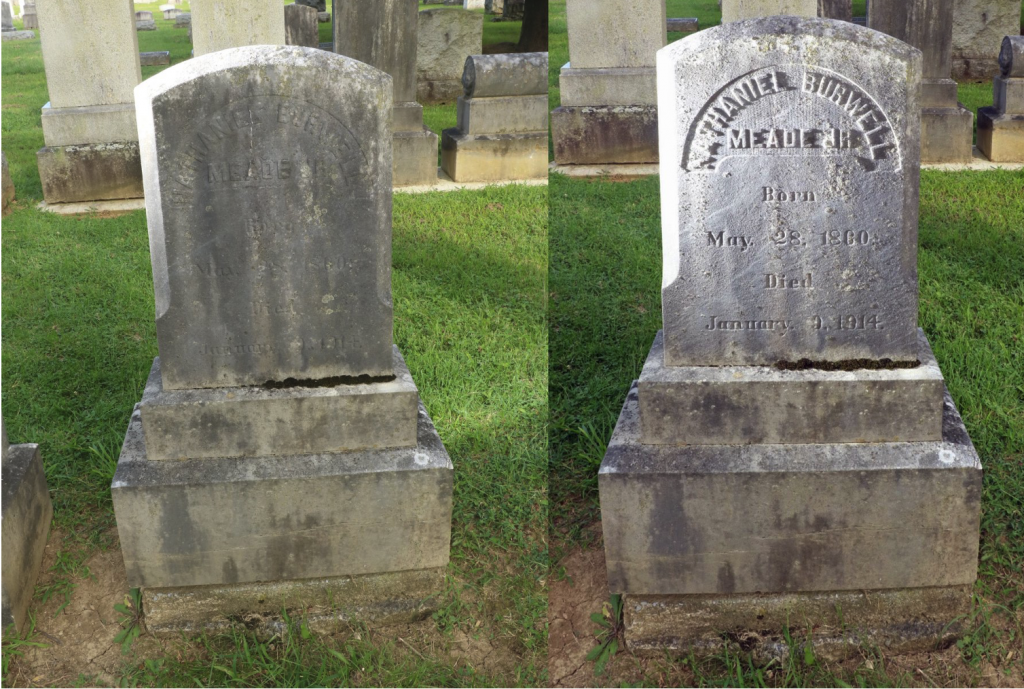
The Cemetery Conservator for United Standards website has a page on reading weathered headstones called Reading Stone Basics. This website discusses other no harm methods such as a foil impression, adding snow to the lettering, or gravestone rubbings. Before doing any rubbings, the gravestone should be evaluated for safety and durability. These methods are also available to download as a PDF, so you can print it and take it with you. We suggest exploring their website as there is so much to learn about cemetery and headstone conservation. Always contact a professional or take training courses for anything other than no harm methods for reading a headstone.
The inscription on a headstone holds valuable information that can tell us more about the person and about the relationships of those they left behind. It is extremely important to document and record these relationships. Inscriptions fade, and a stone itself can be damaged or decay over time.
An example of this is the memorial for Edwin A. Turner, who died in 1865. Turner and his father were traders in the mid-19th Century. They were traveling through Utah with another man named Holland when an argument broke out between Turner and Holland. Their disagreement turned into a scuffle, and Holland stabbed Turner. Turner died at just twenty-six years old. The inscription on the headstone included words from his mother.
My darling boy, I little thought that
When I last saw thy manly form
And fondly kissed thy noble brow
That death would dash thy life away
Mother
A photograph of Turner’s headstone taken in the 1970s shows the inscription was clearly visible. A subsequent photo taken in 2009 shows it had nearly crumbled away, and a new stone had been placed in front of the old stone. By 2021, the original headstone no longer existed, and the new headstone did not include the inscription from Turner’s mother.
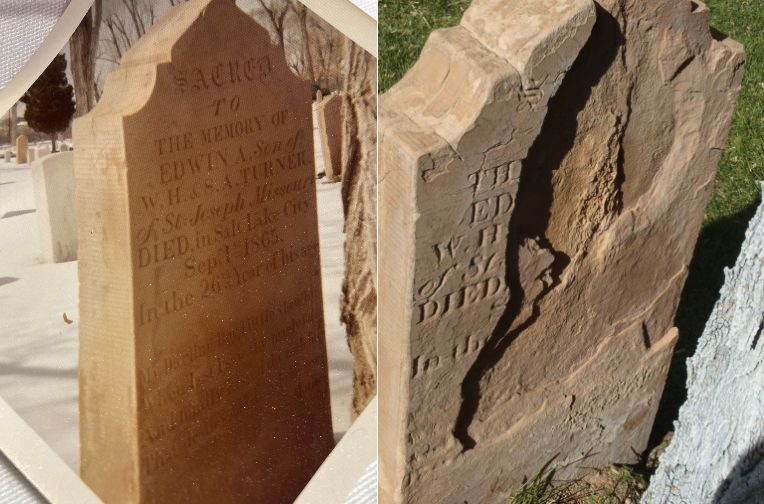
An inscription on a headstone usually contains genealogical information such as name and dates. It can also include other information like names of family members, unique inscriptions, symbols or icons, and other clues to religion, military service, fraternal organizations, and more. This information helps others in their genealogical research.
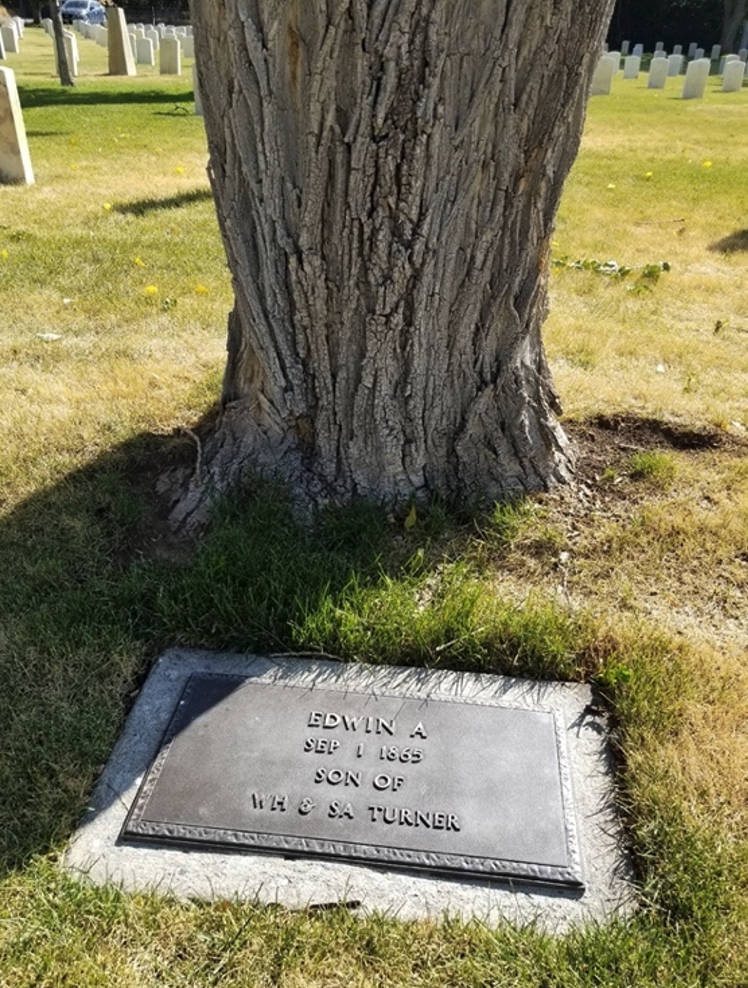
As the inscription on a stone contains so much information, you’ll want to be sure when photographing a headstone that the stone is readable. Remove any debris or dirt from the front of the stone, or that has gathered around the edges. You can see in the photos below how the uncut grass covers part of the inscription, which reads:
“We can safely leave our boy
Our darling in Thy trust.”
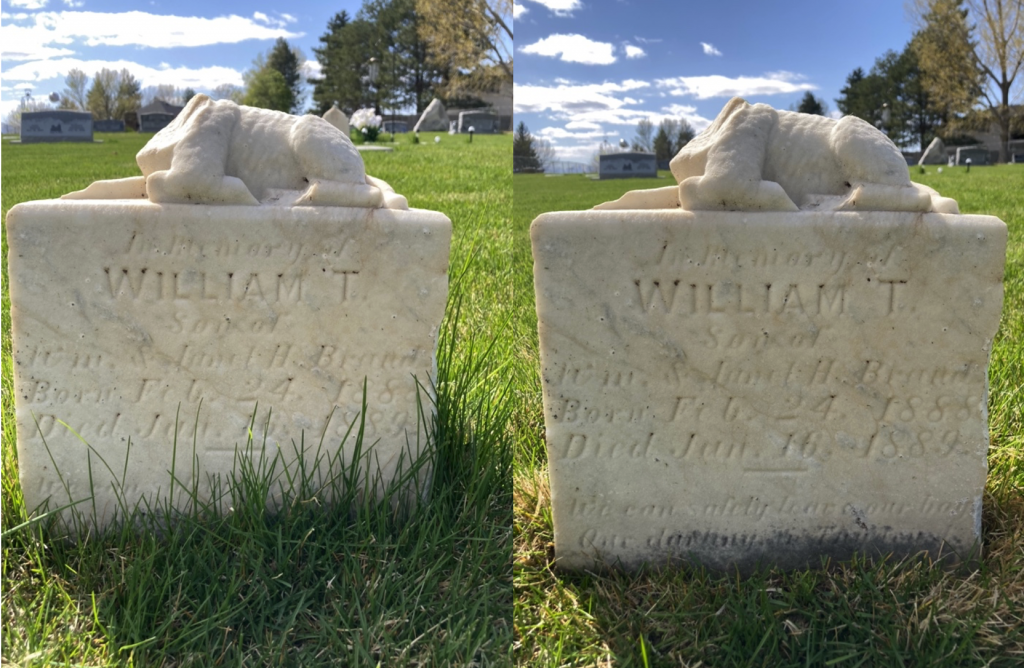
Our Find a Grave® team has compiled some helpful tips to consider when photographing a headstone and documenting its surroundings.
- Use a camera or cellphone with GPS enabled to add the grave’s location.
- Make sure your lens is clean and avoid including your fingers, feet, or shadow in the photograph.
- Make sure the stone is readable; remove debris such as soil, leaves, or twigs.
- Take multiple photos. This will give you more choices when uploading photos to the site.
- Photograph the entire headstone straight on so that it nearly fills the frame. If the stone is upright, you may need to kneel to get the best shot. You can photograph at different readable angles as well.
- If the headstone has multiple sides with text, then photograph each side.
- Capture a close-up of text on the headstone.
- Capture an area photo of the stone, giving context and showing the surroundings of the grave.
- A shadow can help text be more pronounced. Morning or evening may be best.
- Consider using reflective material (such as a mirror or foil on a flat surface) to cast light on the stone.
- If there is not a marker for the grave, take photos of the grave location in context to the surrounding stones. Add to the caption that the grave is unmarked.
You can use the Find a Grave® app (iOS or Android) to upload the headstone photos directly to the memorial or upload them to the specific cemetery page to transcribe later.
Thank you in advance for your efforts to honor veterans this Memorial Day. We hope that every member of the Armed Forces will have their final resting place remembered and documented on Find a Grave®. To explore military records for our country’s veterans, search Fold3® today. To see Find a Grave® memorials for veterans and others, search Find a Grave® today.


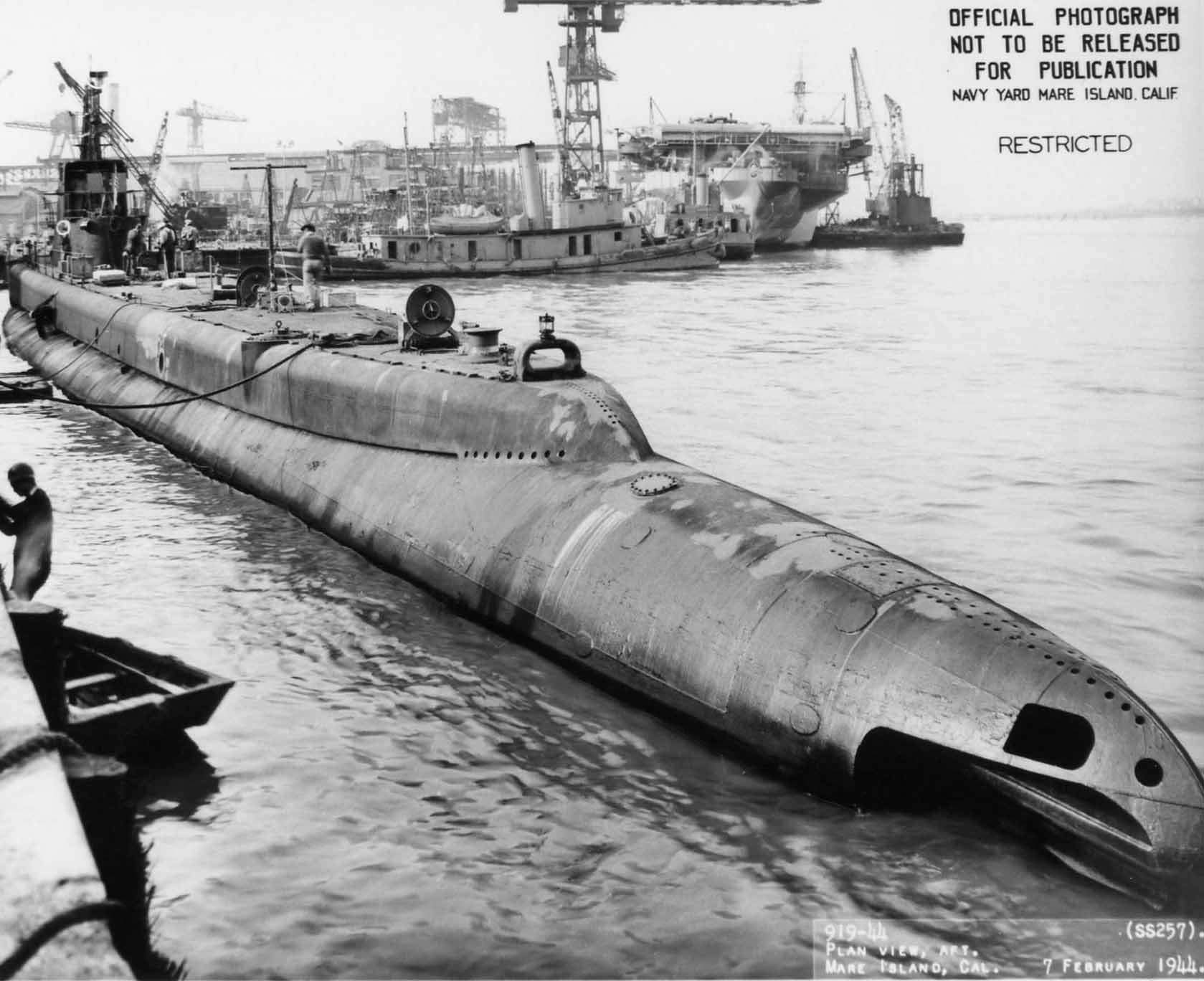


Thank you so much for all of the reminders and tips when visiting our dear veterans, family and friends’ graves.
This was very informative. Our historical society is working on cleaing our headstones some of which date back to 1700 and 1800’s
I’m glad to see responsible information about maintaining gravestones. There are memes online advocating scrubbing with harsh brushes, solvents, etc. They are doing irreparable damage. I’m going to share this as widely as I can.
Now, let’s see if Find A Grave volunteers will do as the above suggestions state when taking the photos.
Don’t get me wrong, so many volunteers take photos wonderfully! You can truly tell that they care about the photos they are taking and go above and beyond what is required. But, there are so many that do not. It’s possible that too that the photos that include feet, hands, shadows, garbage, sticks, leaves, unreadable photos that are clear at the top and blurry at the bottom, or just plain awful, and there are a lot, may have been taken years ago when they were giving prizes for the most photos the volunteer had, or the most memorials managed, etc. (That is why you see some that have thousands of memorials they manage, etc.).
I wish Find A Grave would put that list above somewhere that all volunteers would see it. I have been told by several volunteers over the years after viewing a gravestone with a stick blocking the date of death in the photo, and contacting them, that they were told by Find -A- Grave not to move anything.
Some people will say anything to keep from taking responsibility. I do have to say though that as I am photographing I too, do not always notice every stick, or leaf, shadow, flower Sometimes I am photographing in 100 plus degree heat and I cannot even see what I am photographing because the sun is so bright or sweat is dripping into my eyes. It’s easy, but not always easy to get a photo of very good quality.
I will sometimes post a photo with a date blocked by flowers or grass, figuring it will at least provide the GPS location. I almost always go back another day and get a better photo. I have made plenty of spread sheets with names, locations and notes of headstones to rephotograph. I have rephotographed some headstones 3,4,5 times before I get one that I am happy with.
On the other hand I have seen photo after photo in one cemetery uploaded by one photographer with their feet or shadow in EVERY SINGLE PHOTO.
The shadows of the photographer is another reason for getting well back from the grave and using a telephoto or zoom lens.
I usually carry a few Poppy crosses and place one by the grave whilst photographing it. I once visited a churchyard shortly after Remembrance Day, there must have been a special service where they handed out the Poppy Crosses but most people just dumped them by the door as they left so I collected up some of them and kept them for use in photographs or for leaving on the war graves. Sad really, the local Regimental Association had been around putting their own Poppy Crosses on “their” graves but ignored the rest. I had gone there to photograph some Canadian or Newfoundland Foresters so I made sure they all had a Poppy Cross as well as some other Canadian graves.
Thank you so much for the tips!
Some of the cemeteries where I take FaG photos are not withing cellular range, which means I cannot have the website up at the time of taking the photos. Is there a way to manually add the GPS to the GPS entry area on findagrave.com later, once I have connectivity and can also upload my photos.
Thank you for your help,
Debbie Gray
#49270181
I suggest going to a mapping site, like GoogleEarth, and put a pin where you found the grave. Then if you right click the pin, it will bring up the “Info” tab which contains the lat and long.
If you use Google Maps or Apple Maps, you can do the same but you have to swipe up on your phone to see the position information.
I believe that if you download an “offline map” to GoogleMaps, your GPS on your phone will still record the position. GPS is not through cellular but directly between you and the satellites.
Thank you for this. Please folks, it only takes a few seconds to brush off mowed grass, leaves and other debris before you take the photo.
I always carry a portable reflector similar to this
https://www.wexphotovideo.com/calumet-38cm-translucent-zipdisc-1667382/
These usually have a silvered or white side and a black side or a slide on cover. There are small pocket versions and larger ones. They can be used to stop the sun shining into the lens or particularly the larger ones to reflect light onto the headstone. I also have a small portable floodlight that I can use.
Older burial grounds in the UK are probably protected as scheduled ancient monuments but not usually WWI and WWII areas. Though the CWGC headstones are owned by them and also protected. There are several different types in different parts of the UK. I have known people (including the CWGC themselves) make the letters more readable with a felt tip pen, it should not be done but the rain will soon wash off.
I also carry a spare Poppy cross, just makes better photograph.
It might be stating the obvious but do not tilt the camera, always hold the camera vertically to avoid parallel errors. Often best to get well back from the headstone and zoom in on it, much better than tilting the camera.
Take your pictures in RAW mode in as high a resolution as possible, I have often been able to recover a very dark image and get a decent picture.
Sorry if these are obvious.
Seem like great suggestions and not obvious to me. This was a educational email, which you enhanced. Thank you.
Use the time of day for your trips to the cemetery. It can be used to match the Sun’s angle to the photographer’s advantage for taking shots of headstones. Hold the camera at the livel of the gravestone if possible to eliminate perspective problems.
Usually I woule be going from burial ground to ground, I have only once gone at a particular time, that was when I was trying to photograph a headstone in North Wales cemetery. I went for a number of times but the inscription was difficult to photograph because it was slate so I went back on my last day, first thing in the morning.
I don’t tend to do headstones now, I used to take them for the War Grave Photographic Project but just every one in the North of Scotland, I photograph War Memorials now for the IWM WMR but most of the time adding other people images to the IWM WMR server.
Thank you so much the information and tips. Nearly 1 year ago, I got to go to Abraham Lincoln National Cemetery in Elwood, Illinois for Memorial Day to honor the military service of all of the people who have been buried there. The reason why we celebrate Memorial Day every year because Freedom is not free, it is paid for all of us with the blood of American soldiers who have made the ultimate sacrifice with their own lives. Memorial Day is about honoring the military dead who have died while serving in the United States Armed Forces. It was a great pleasure to go to Abraham Lincoln National Cemetery where our nation’s military heroes are buried at. When I went to Abraham Lincoln National Cemetery while I was in Elwood, Illinois for Memorial Day, I immediately noticed that there were coins placed on the soldier’s graves along with thousands and thousands of small American flags on all of the military graves at Abraham Lincoln National Cemetery. The coins that were placed on the graves were for paying respect to the fallen soldiers who have been laid to rest there. Each of the graves at Abraham Lincoln National Cemetery tells a story of that military hero who has served in the United States Armed Forces, the name(s), birthdate, branch of military service, the rank(s), the war(s) that they’ve fought in, the military medals or awards that they’ve earned and even including the date of death. Memorial Day is about honoring the men and women of the US Army, US Navy, US Coast Guard, US Marine Corps and even including the US Air Force. I love our troops and I support members and veterans of the United States Armed Forces. I will forever appreciate every single American soldier or service member of the American military for who has laid down his or her own life for me, my safety, the safety of all of my family members, my friends and for my Freedom and Liberty. God bless the United States of America, God bless our troops and God of the United States Armed Forces.
Thank you so much the information and tips. Nearly 1 year ago, I got to go to Abraham Lincoln National Cemetery in Elwood, Illinois for Memorial Day to honor the military service of all of the people who have been buried there. The reason why we celebrate Memorial Day every year because Freedom is not free, it is paid for all of us with the blood of American soldiers who have made the ultimate sacrifice with their own lives. Memorial Day is about honoring the military dead who have died while serving in the United States Armed Forces. It was a great pleasure to go to Abraham Lincoln National Cemetery where our nation’s military heroes are buried at. When I went to Abraham Lincoln National Cemetery while I was in Elwood, Illinois for Memorial Day, I immediately noticed that there were coins placed on the soldier’s graves along with thousands and thousands of small American flags on all of the military graves at Abraham Lincoln National Cemetery. The coins that were placed on the graves were for paying respect to the fallen soldiers who have been laid to rest there. Each of the graves at Abraham Lincoln National Cemetery tells a story of that military hero who has served in the United States Armed Forces, the name(s), birthdate, branch of military service, the rank(s), the war(s) that they’ve fought in, the military medals or awards that they’ve earned and even including the date of death. Memorial Day is about honoring the men and women of the US Army, US Navy, US Coast Guard, US Marine Corps and even including the US Air Force. I love our troops and I support members and veterans of the United States Armed Forces. I will forever appreciate every single American soldier or service member of the American military for who has laid down his or her own life for me, my safety, the safety of all of my family members, my friends and for my Freedom and Liberty. God bless the United States of America, God bless our troops and God bless all members and veteran of the United States Armed Forces.
I am surprised to see no mention of the Association for Gravestone Studies that has, and does, publish manuals on what techniques should be used?
Last year I learned that my 2x great grandfather (a Civil War veteran) was buried in a cemetery not far from where I live. His military burial card gave the specific spot. To my disappointment, when I went there, there was no marking for him and the entire cemetery was poorly marked or maintained. I contacted the church that was “supposed” to be in charge of it and was told the cemetery was recently “reassigned” to them and what records they had were very poor. I realize headstones from that far back are often lost, but the church officials seemed rather uninterested in helping me find where the gravesite might be, even though his burial card should have been useful in finding it .
We have a project to visit Veterans Graves and found yesterday that one of our vets has no marker. He died in poverty after WWII.
Family members can request a marker at any time from the Veterans Administration….
https://www.va.gov/vaforms/va/pdf/va40-1330.pdf
Thanks. I didn’t know that was possible. I will do that if I ever find the spot he is buried at.
I am not defending that particular church but most are run on a shoe string budget with volunteers and low paid staff. Since they just got it passed to them they may not have the expertise or confidence to provide the information. Perhaps contact Veterans Affairs for more information as they should have a paper trail of all military internments.
I agree with Raymond on getting a new stone. Also, it can’t hurt to see if your area has a DAR chapter who would be wiling to pick up the cause of helping the church figure things out.
Thanks for the idea. I’ll have to look into that.
DAR? Isn’t that for descendants of the American Revolution? My ancestor was in the Civil War. Would they take on that?
DAR is the Daughters of the American Revolution, but they are big supporters of historic preservation of all time periods and of veterans of all of the wars. If there is a DAR chapter in your area it would definitely be worth reaching out.
The UDC (United Daughters of the Confederacy) may help.
For what it’s worth, go “sideways.”
Find out if there is an active Veterans Service Officer in your area. They can be enormously helpful for both the VA paperwork and for locating graves if they put new flags out for Memorial Day. If they don’t put out flags, they often know who does. Ask local funeral homes how you can get a cemetery map. If the cemetery is too old and not maintained and they don’t have maps, sometimes local historical societies do. Police and fire departments often include veterans—some of them are pretty diligent about honoring veterans no matter what war. Even though the Civil War was on “home” soil, a good VFW or similar organization for veterans (the American Legion, the Disabled Veterans) can also help. Look for a Facebook page for the town where the grave is. Sometimes there are locals who take an interest in the history of their own areas, but not as formally as a historical society does. Contact the moderator if you find a Facebook page. Just do a “lateral think”—good luck!
AEA: Thanks, I’ll try a couple of those ideas.
When entering the headstones in FaG. please ensure you click the Prefix box and add in the military ranking. If there isn’t an abbreviation shown for their rank you can just type it in as the box will accept it both ways. That way it ensures that the veteran receives dedicated information along with their names when people are perusing through the lists of people in the cemetery.
My civil war ancestor’s gravestone in Oakwood, a city-managed cemetery in Saginaw, Michigan, is sinking and tilted. Nearly impossible to read his unit anymore.
Maybe 5 years ago I tried getting the city to reset it, even offering to pay for it. After about two years, they said they did, but it has only sunk more and now has a scratch on it. I tried hiring a cemetery worker I met at another cemetery but he never showed up. I tried contacting veteran groups but no luck. Is this something we should try to fix ourselves? If so, how…what goes under it and how to lift it? I can’t lift 230 lbs and don’t want to harm it by trying to lever it. It’s an upright white stone like you see in Arlington. I was told I can’t get a new one from the federal government since there is a stone there already. Any suggestions? Thank you.
You may be able to get a new stone. See this:
https://www.va.gov/resources/requesting-a-replacement-government-headstone-or-marker/
The reason old stones sink can be many. Most graves of that era did not have liners so eventually there can be soil collapse. If there are/were trees nearby, the roots can go, etc. A cemetery superintendent and/or a local headstone company can advise you about how to deal with shoring up or filling in the soil and/or adding a small concrete slab to give a solid base for the headstone.
May be sinking/tilting due to the stone’s installation or the coffin/graveside caving in as it deteriorates. Resources might be local gravestone business that sells/sets stones, asking cemetery office who they use to reset stones and contact them yourself, or contacting local veteran services for their input.
An umbrella usually helps create that shade if reflections are an issue.
Theodore R. Rice buried in Highland Memorial park, Ocala, Florida. Is a Marine Veteran, and died 12-03-2021… His marker is not yet there, but I believe the Marine Corps have placed one there. I would very much like to have him remembered. He is registered with Find-A-Grave.
Find A Grave allows for multiple photos. Always, Always, Always take at least two. One to get a clear shot of the inscription and one to have a panoramic shot to locate the monument with respect to landmarks. This allows others to more easily find the monument again. We regularly use GPS to mark the spot but many rural cemeteries have spotty internet connections.
How does the quality of the internet connection affect GPS?
I either use a portable GPS and write down the GPS reading or my camera’s built in GPS adds the position to the EXIT. Neither have any dependence on Internet connection. I used to use a small GPS tracker then link the GPS position to the image when I got home.
There is a product called “D2 Biological Solution” that is a great headstone cleaner, especially on marble stones. It is not cheap, but it goes a long way. It kills lichen on headstones. The results is not necessarily quick, it may not be noticed for a month or so. In 2016 I cleaned some concrete headstones that were about 30% covered with lichen; it is 2022 and there is still no lichen. I also cleaned a marble headstone in 2016. It was grey with dirt and about 50% dark grey in color. After 5 days the dark grey was substantially lighter. Eventually, the stone turned hospital white; after 3 years, it was still white. It is still white.
Google “D2 Biological Solution” to buy it.
I visited the cemetery when quite of few veterans are buried on Sunday. The grass had not been cut and I got a terrible sinus infection.
After reading your article and information regarding marking those graves I will keep this article and go back in the fall.
Thank you so much for these very useful tips to honor all military members who have served in the United States Armed Forces. I got to go to Abraham Lincoln National Cemetery in Elwood, Illinois last year and it was a great pleasure to honor America’s fallen military heroes who made the ultimate sacrifice. Lots of military burials have taken place at Abraham Lincoln National Cemetery. These soldiers have sacrificed so much for all of us. We owe them. God bless America and God bless the United States Armed Forces.
https://www.findagrave.com/memorial/14431808/michael-john-sutter
Here is the most visited military cemetery in the United States of America, Arlington National Cemetery. This is America’s most famous military cemetery, with the Tomb of the Unknown Soldier, the most visited and famous spot at Arlington National Cemetery. Imagine visiting the tomb of an unknown American soldier who was killed in France during World War 1. The tomb is heavily guarded 24 hours a day, 7 days a week and all year long regardless of the weather conditions. This tomb is located at Arlington National Cemetery, where more than 400,000 of America’s fallen military heroes have been laid to rest. Even US Army Medal of Honor recipient 1st Lieutenant Audie Leon Murphy is also buried there at Arlington National Cemetery. Audie Leon Murphy was also a movie actor and an American soldier in the United States Army. However, the Tomb of the Unknown Soldier is guarded by the United States Army’s 3rd Infantry Regiment at Arlington National Cemetery. This means that visitors are prohibited from trespassing on the Tomb of the Unknown Soldier and are also required to stay behind the chains and rails at all times and must remain silent and standing during the changing of the guard ceremony at Arlington National Cemetery.
https://www.findagrave.com/memorial/1051/tomb_of_the_unknowns